Kenow Wildfire photos
Waterton Lakes National Park
Preparing for a wildfire
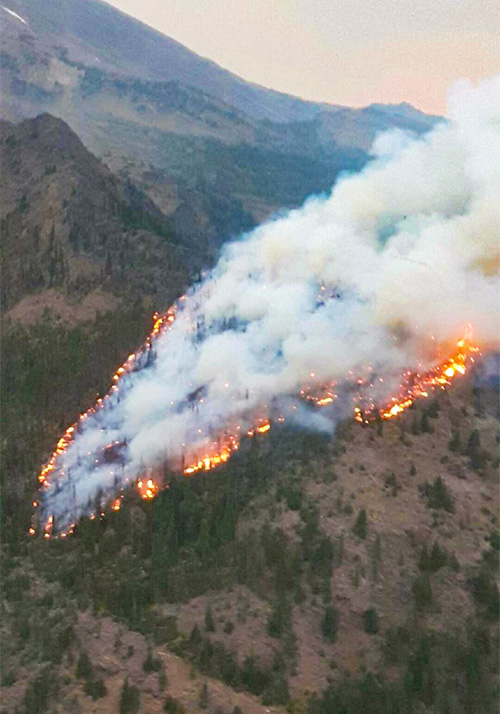
Lightning struck the steep slopes of the Flathead drainage, British Columbia on August 30, 2017. A reconnaissance flight within one hour after lightning moved through the area shows the volatility of Kenow Wildfire. It was unsafe for firefighters to attack from the ground or aircraft to drop water because the fire started too close to nightfall.
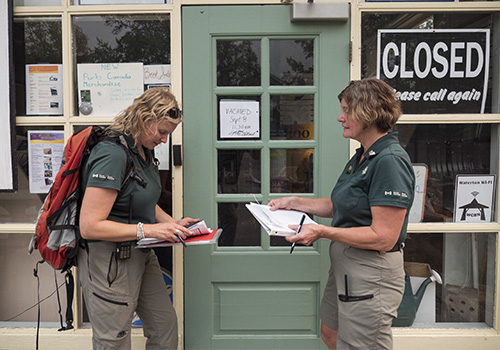
An evacuation alert went into effect on September 5 and was upgraded to an evacuation order on September 8. In this image, Parks Canada employees go door-to-door to ensure that residents and visitors had vacated the townsite in Waterton Lakes National Park.
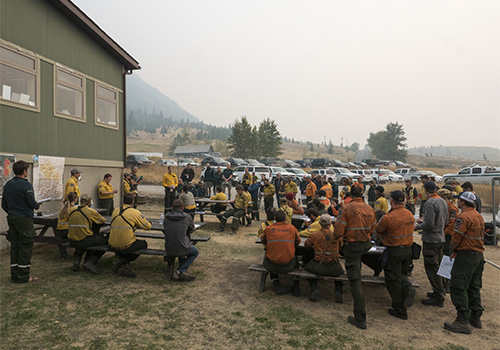
Fire crews attending their morning fire briefing.
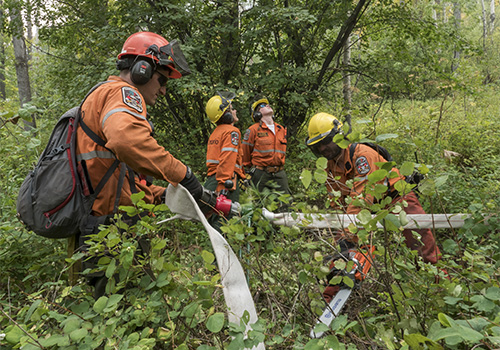
A crew installing perimeter protection around Waterton townsite.
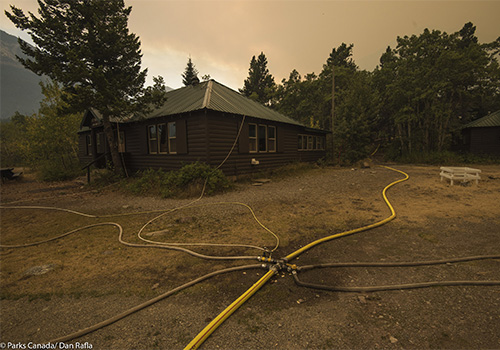
Facility protection began for the townsite and sprinklers were set up on Lone Lake backcountry cabin. All of the Red Rock Parkway backcountry, including Crandell Campground and trails, was closed. Here, hose and sprinkler kits are set up in advance of Kenow Wildfire’s arrival to protect Canyon Church Camp buildings in Waterton Lakes National Park. September 2017.
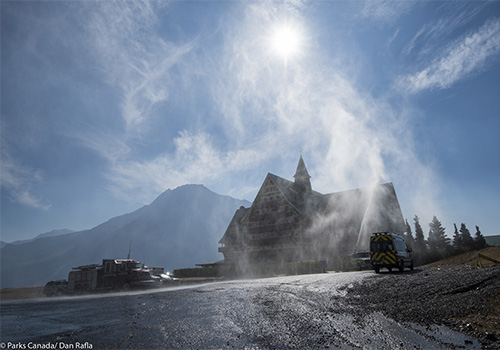
Municipal firefighters prepare the Prince of Wales hotel to face Kenow Wildfire by wetting it down and creating a protective bubble of humidity. It was men and women from Calgary, Lethbridge, Taber and Coaldale fire departments, Parks Canada’s and Alberta’s incident commanders and operations chiefs who stayed behind to protect Waterton townsite from Kenow Wildfire, a fight that lasted through the night and well into the next morning.
A forecast for extreme fire behaviour
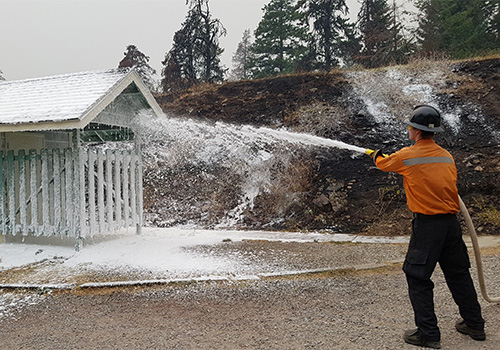
With the days made available by wildland firefighters holding Kenow at bay in Akamina Valley, B.C., independent contractors with unique fire-protection equipment were able to assist with protecting infrastructure in Waterton Lakes National Park in September 2017. As much of the park’s infrastructure and values were protected with the time and resources that were available.
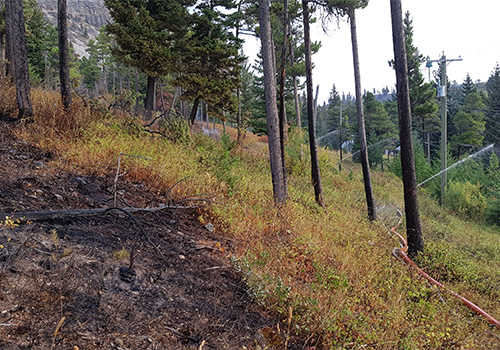
Delaying the fire’s forward advancement under extremely hot and windy conditions gave Parks Canada time to bring in municipal firefighters from across southern Alberta who were then oriented in defending the town along the urban-wildland interface. This image shows where the fire burned up to behind high-volume sprinkler system and pumps that were set up by Parks Canada personnel, municipal fire departments and contracted specialists to protect the townsite.
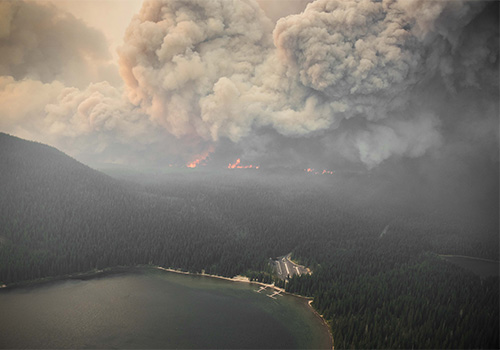
Kenow Wildfire is seen burning on September 11, 2017 around 5:30 p.m. near Cameron Lake Day-Use Area and parking lot in Waterton Lakes National Park.
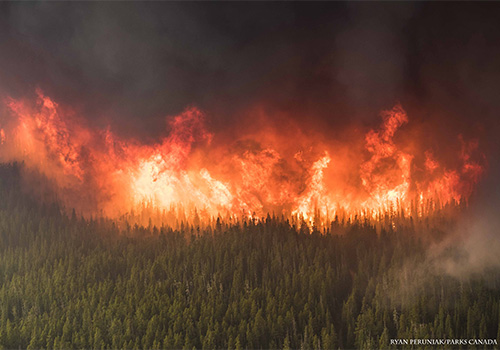
At 5:30 p.m. Kenow Wildfire shows aggressive behaviour as it grows under extreme burning conditions in Waterton Lakes National Park.
On an average September night, the temperature would have dropped and the relative humidity would have increased significantly. But on September 11, at 8:00 pm, the temperature was 22C, relative humidity was only 18% and the sustained wind out of the southwest was 16 km/hr. By 11:00 pm the temperature had increased to 25C, relative humidity was 15% and sustained wind speed was 48 km/hr with gusts between 80 and 100 km/hr. Those conditions combined with darkness produced fire behaviour that became too dangerous for firefighters to pursue except within the townsite where sprinklers, structural protection equipment and engines were set up.
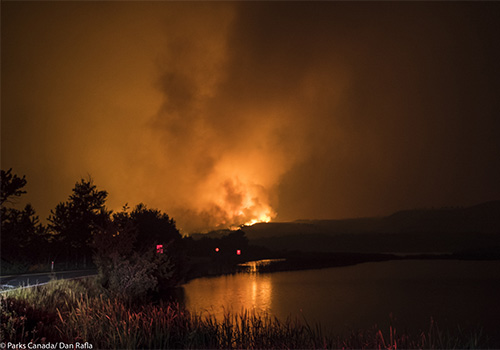
From the entrance gate in Waterton Lakes National Park looking towards the park’s interior at 10:00 p.m., flames from Kenow Wildfire can be seen cresting the hills in the distance on September 11, 2017.
As the fire approached the park gate and Highway 6, Parks Canada fire management personnel attempted to remove vegetation adjacent the highway with hand-held drip torches in order to maintain the escape route for fire personnel and widen a fuel-free area to reduce the risk of the fire crossing the highway. However, the fire moved too quickly and breached Highway 6 before this operation could be finished safely.
Firefighters were forced to retreat for their own safety. Given that winds were estimated at 100km/h, the fire may have been moving as fast as 3 km in 15 minutes, due to the light grassy fuels. This fire behaviour is far beyond the capacity of firefighters to manage safely, particularly at night when the number of tools available for suppression are limited.
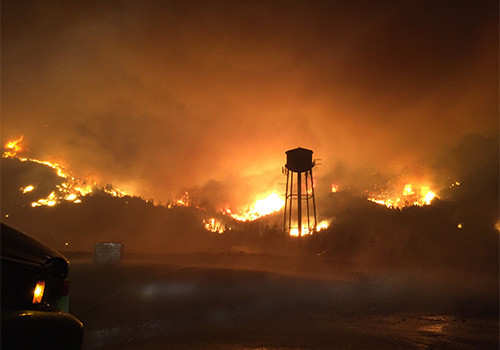
At 11:15 p.m. on September 11, 2017. Here, the fire surrounds the Prince of Wales water tower where Coaldale and Calgary municipal fire crews remained in place to protect the iconic hotel.
Colleagues from Lethbridge and Taber fire departments as well as contracted specialist crews patrolled the core townsite with fire engines and hoses, as embers, thrown from the power of Kenow Wildfire, landed on roof tops.
Impacts and opportunities
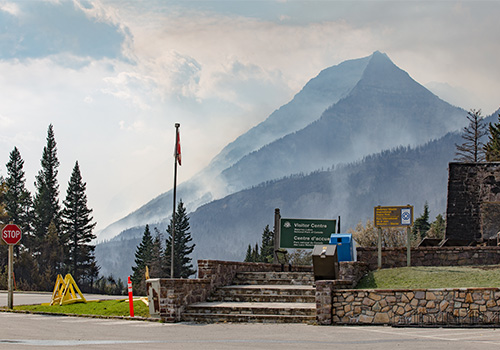
Hot spots and smouldering areas burn in the distance behind the site where the park's visitor centre once stood. Waterton Lakes National Park, September 13, 2017.
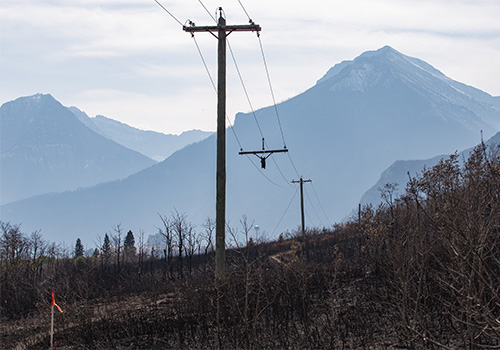
Approximately 100 power poles between Waterton Lakes National Park’s entrance gate and the townsite were destroyed by Kenow Wildfire, September 11, 2017. The townsite, including the fire management incident command post, were powered by generators until Fortis, who worked tirelessly, was able to restore the poles and power on September 26.

Some structures within Crandell Mountain Campground, along Red Rock Parkway in Waterton Lakes National Park, were damaged or lost during the Kenow Wildfire on September 11, 2017.

An aerial image of the Akamina Valley, B.C. shows how fire burned the landscape. The pockets of unburned vegetation are called fire refugia, and represent important safe havens for plants and animals. This region relies on fire to regenerate and grasses in the area have already begun to grow in green. Next spring, wildflowers will be abundant and wildlife will return.
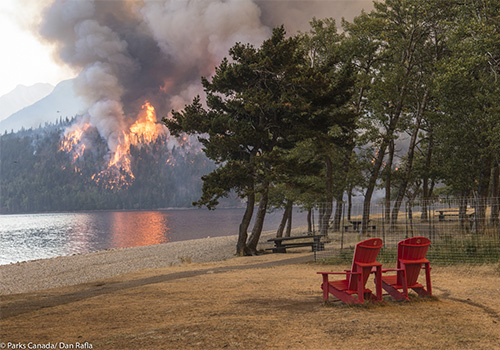
An iconic view from the Parks Canada red chairs sits opposite a helicopter and burn-off operation at Cameron Bay on Upper Waterton Lake. This fire was conducted by Parks Canada, to burn vegetation ahead of the fire’s front, which prevented it spreading south into Glacier National Park, USA. September 12, 2017.
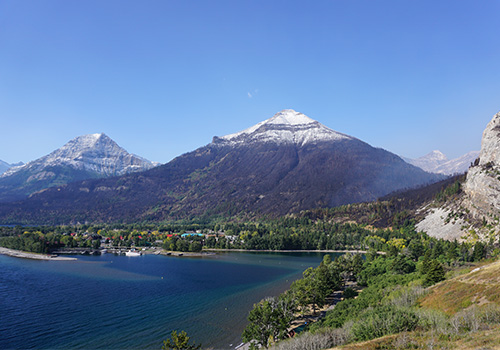
View from near the Prince of Wales Hotel, looking back towards Waterton townsite. (Photo taken September 16, 2017).
Wildlife after the Kenow Wildfire
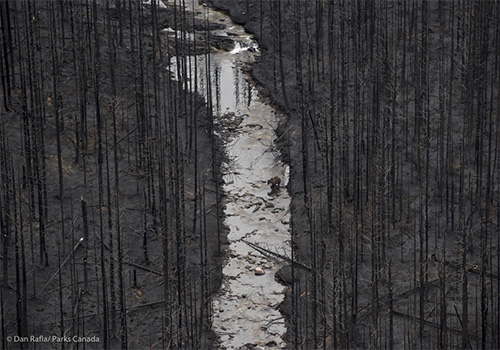
A large black bear forages along Cameron Creek in search of fish killed by the heat of the fire.
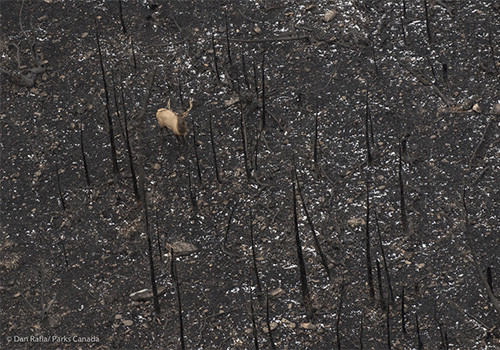
A bull elk is sighted among the remains of the burnt forest of the Akamina Valley.
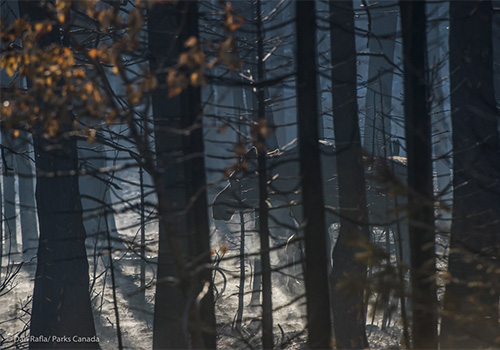
A cow moose wanders through the burned forest of the Akamina Parkway.
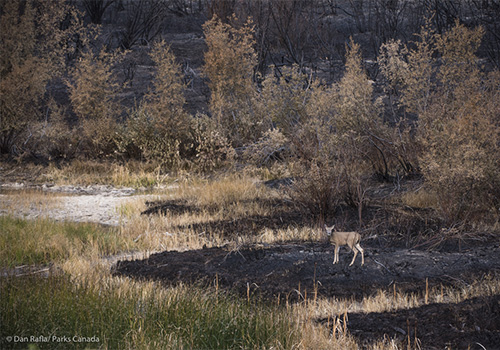
A white-tail doe looks for forage in a few unburned areas near a wetland along Blakiston Creek.
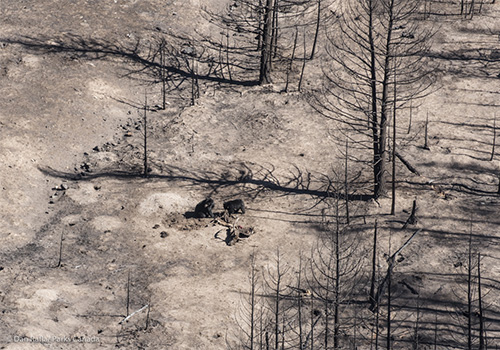
A female black bear and her cub feed on a bull elk after the fire along Blakiston Creek, Red Rock Parkway.
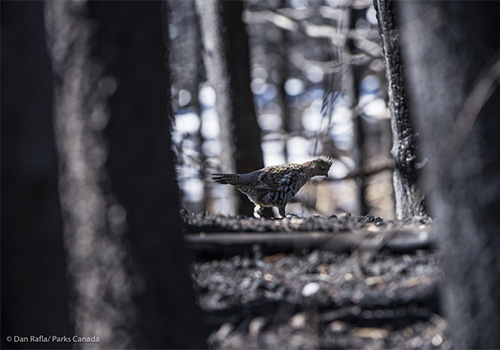
A ruffed grouse forages for food amongst the burned remains along the Red Rock Valley.
Related links
- Date modified :